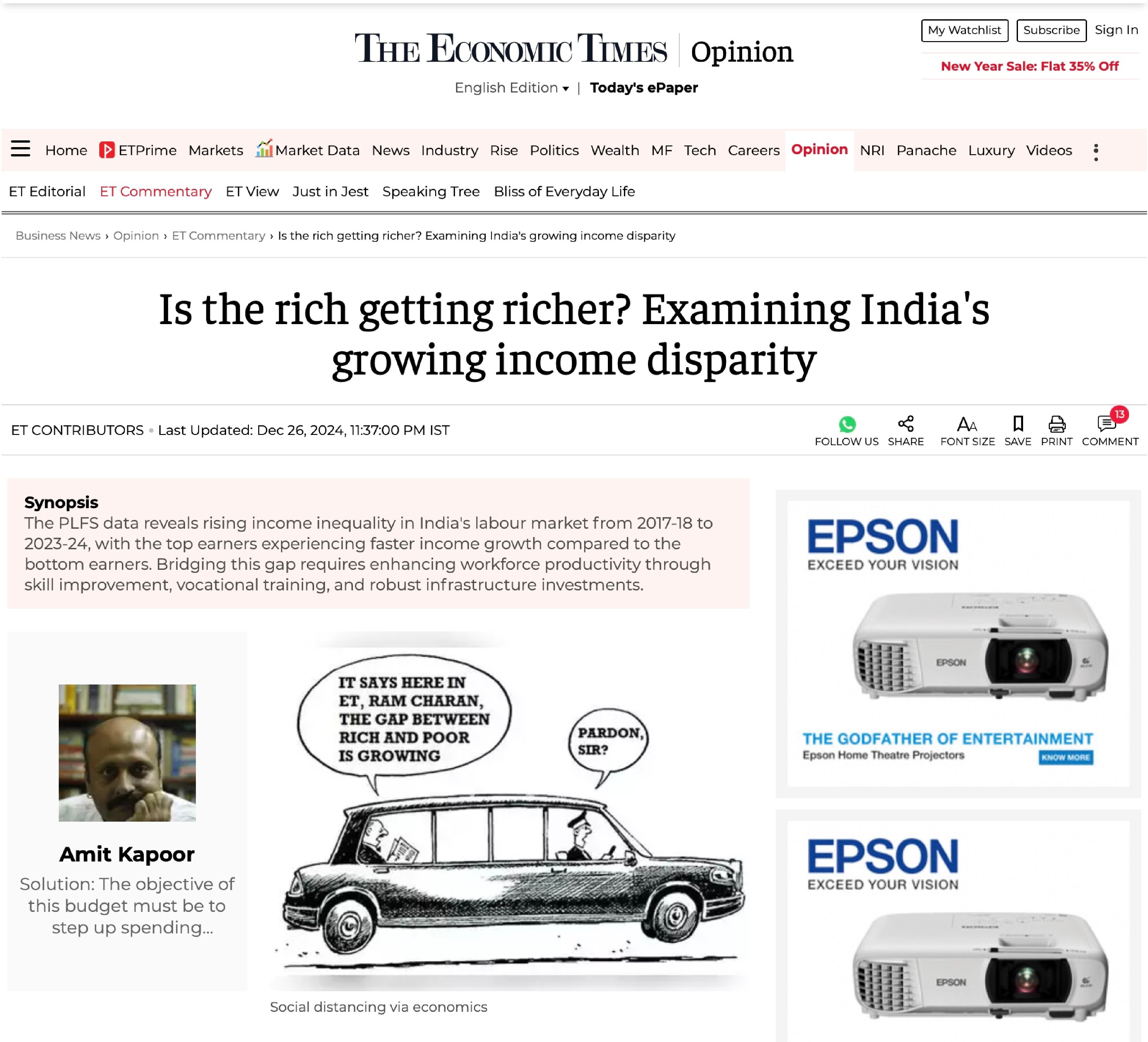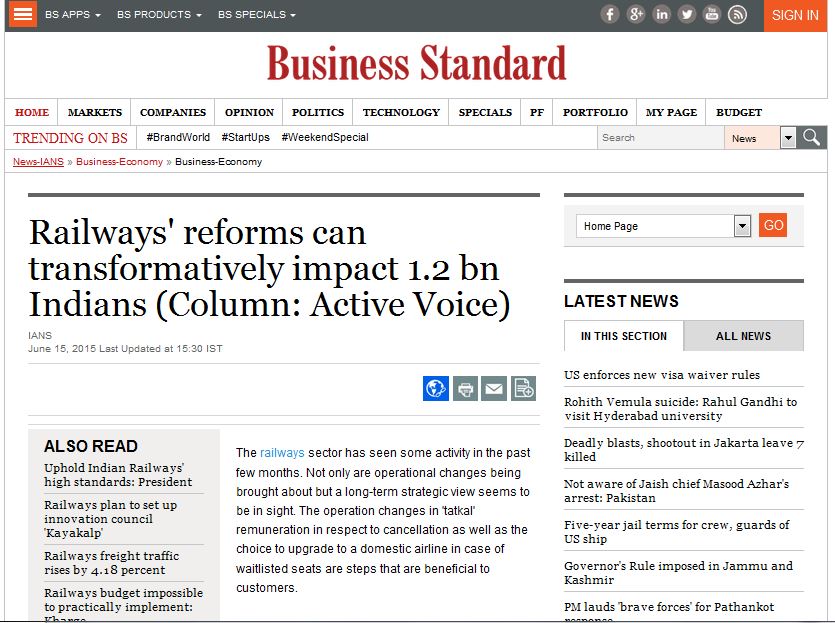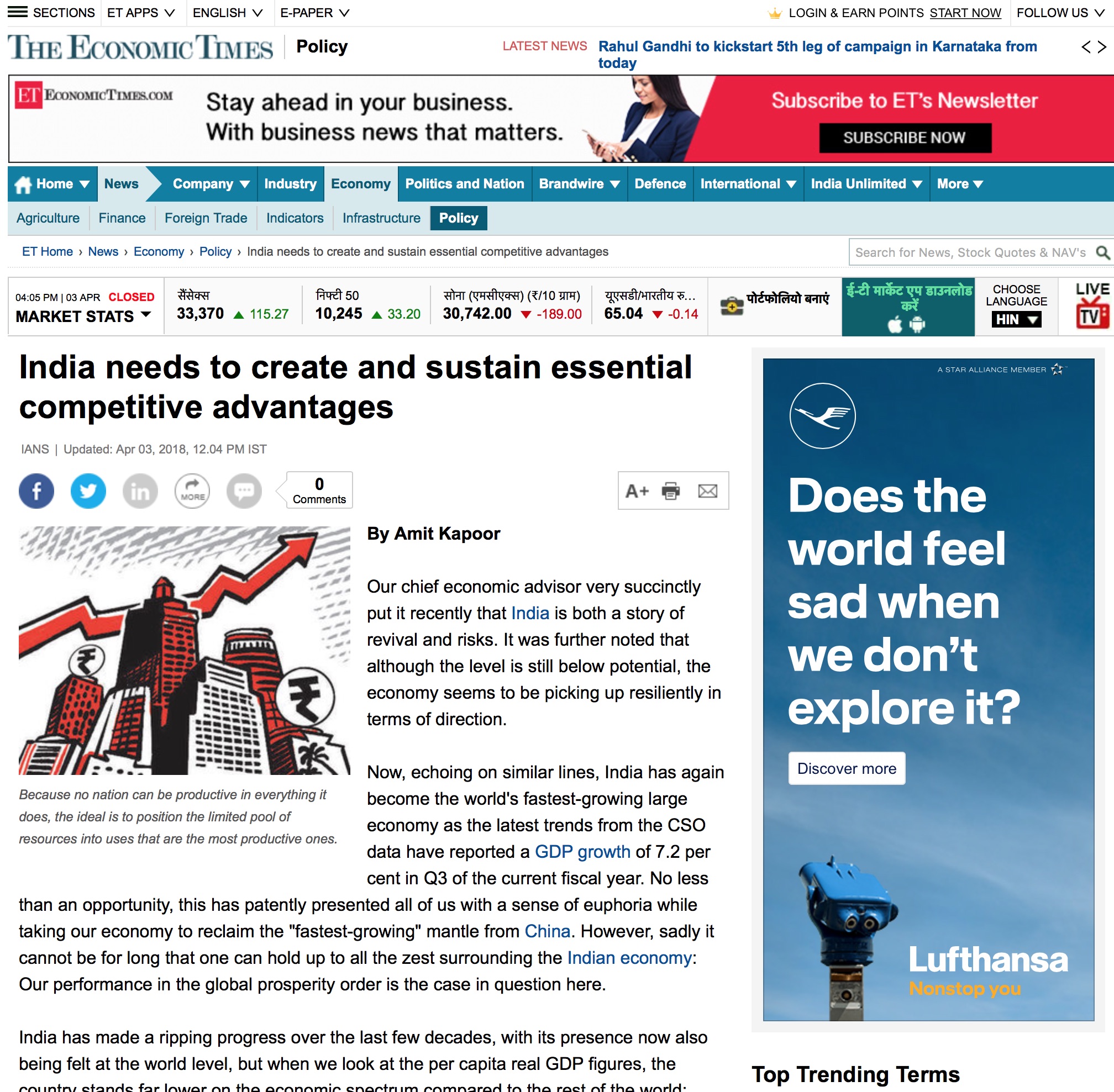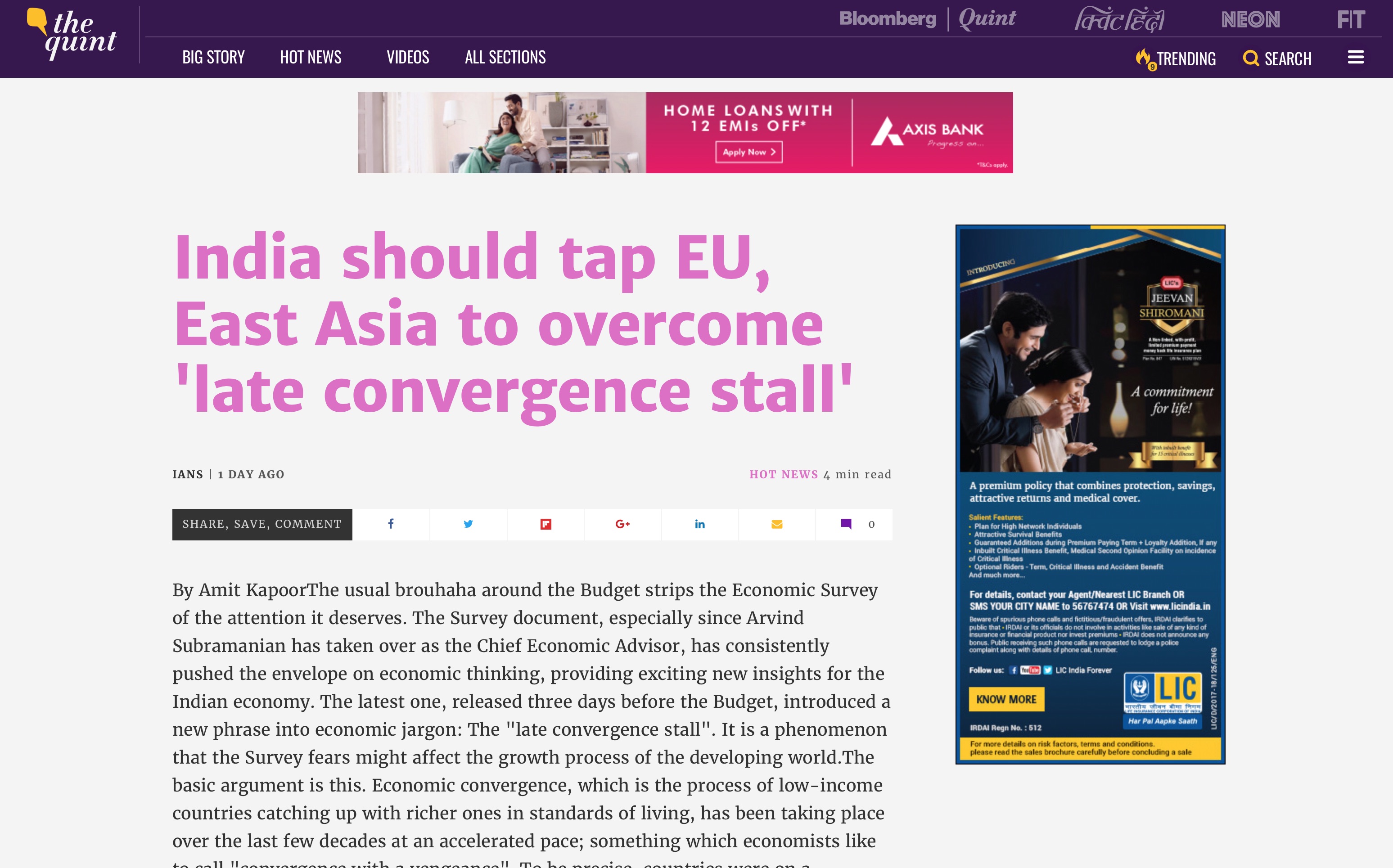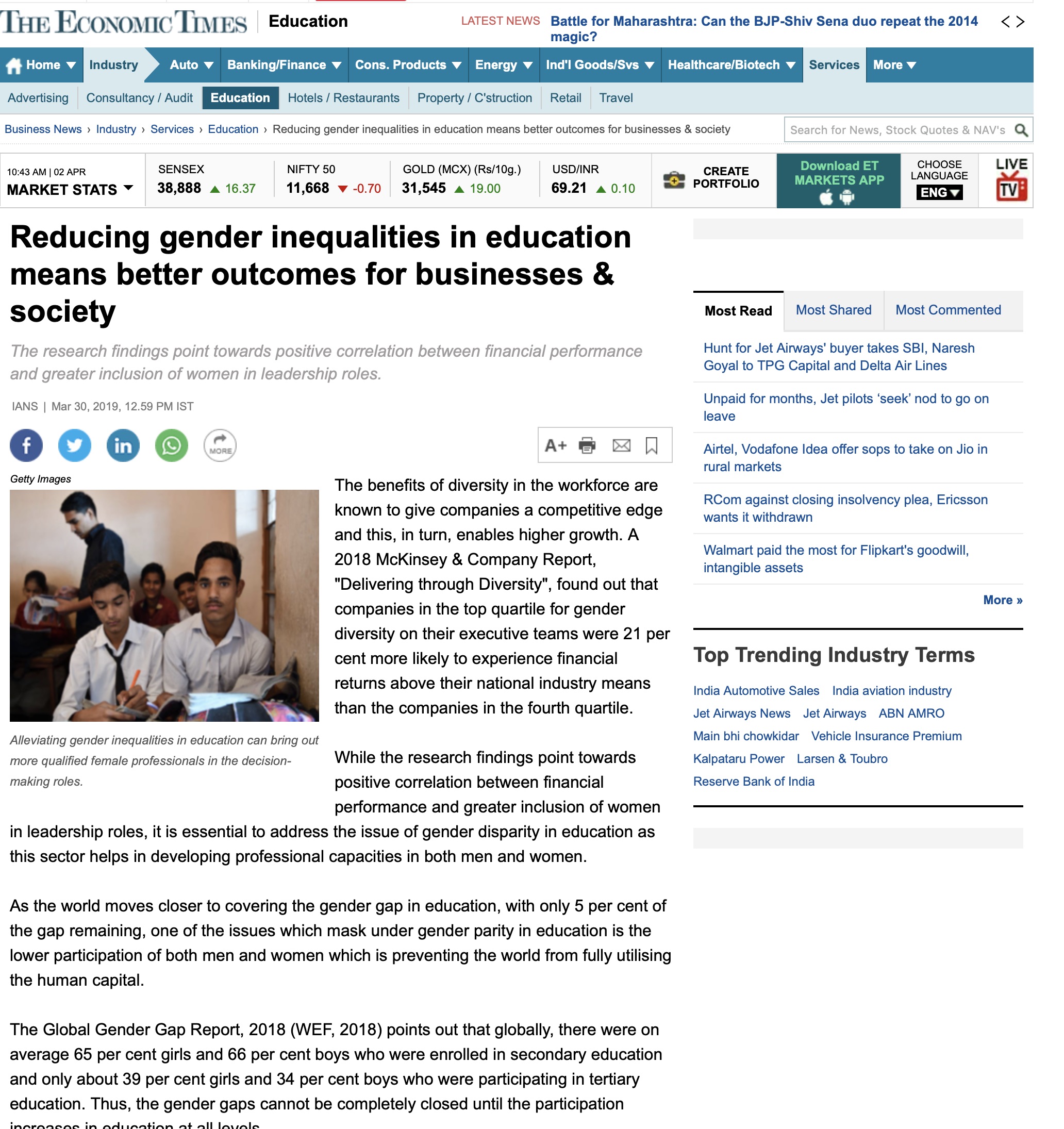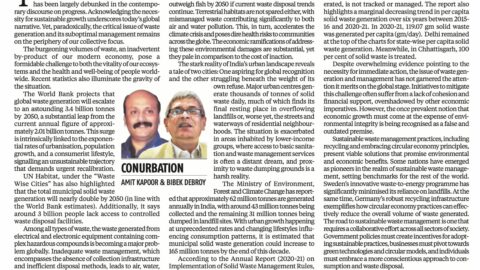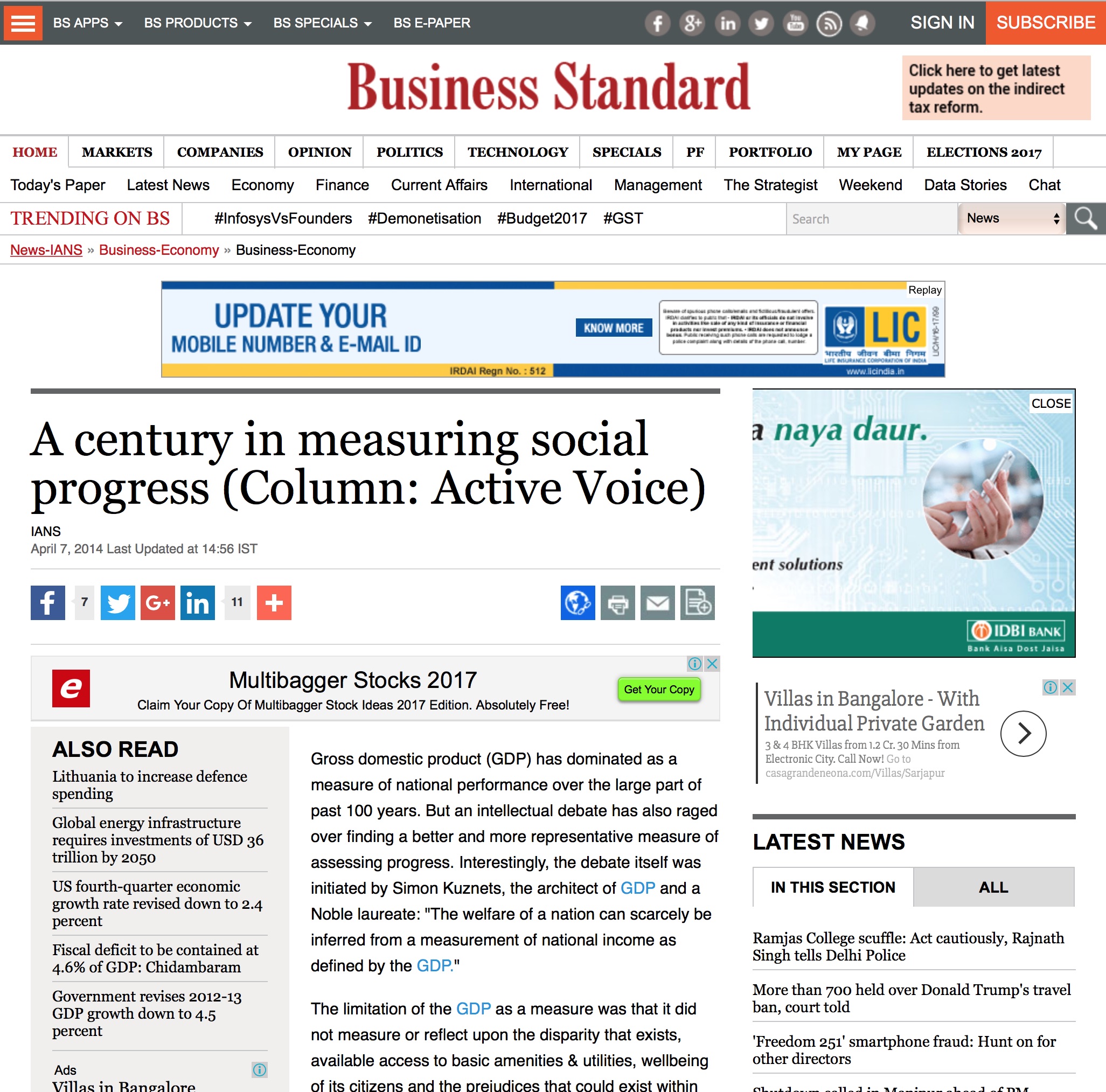By Amit Kapoor and Inputs by Mukul Anand
Labour markets are dynamic systems where workers and employers interact. They play a critical role in shaping economic opportunities and resource allocation. Inequalities in labour markets can be due to various factors and existing inequalities, such as class, gender, and institutional practices.
In India’s context, The Periodic Labour Force Survey (PLFS) is essential for shedding light on the functioning and disparities within the country’s labour market. It captures data on employment and unemployment trends across rural and urban areas, offering key indicators such as the Worker Population Ratio, Labour Force Participation Rate, and Unemployment Rate in both the Current Weekly Status (CWS) and Usual Status (ps+ss).
Unlike absolute poverty, which is often measured against a poverty line, Inequality is relative. One crucial measure of inequality in labour markets is worker earnings disparities. Income, which is a flow variable as it is measured over time, is recorded in the PLFS at the individual level, thus enabling the determination of a personal distribution of incomes in the Indian Labour market. Excluding the negative and zero incomes, the annual median individual income in 2017-18 was ₹1,02,000 (₹8,500 monthly), which increased in 2023-24 to ₹1,44,000 (₹12,000 monthly) at a CAGR of 5.92%. This income data derived from the PLFS can be further categorised and analysed across four income thresholds: the top 1%, the top 10%, the bottom 50%, and the bottom 10%.
As per PLFS 2017-18, a monthly income of ₹25,000 was the threshold for the top 10% income group. By 2023-24, this threshold had increased to ₹32,000. This represents a CAGR of 4.20%, which, while a steady growth rate, is not as pronounced as that observed in the top 1%. The income level of the top 1% of earners in 2017-18 had a threshold of ₹50,000, which surged to ₹75,000 by 2023-24. The CAGR of 6.99% for this group reflects a much higher pace of income growth compared to the broader top 10% category. This suggests that the relatively well-off in the labour market are experiencing disproportionately faster income gains.
The income threshold for the bottom 10% saw a relatively modest increase, rising from ₹3,200 in 2017-18 to ₹3,900 in 2023-24. With a CAGR of 3.35%, income growth for this group has been relatively sluggish. This slow pace of growth underscores the persistent economic struggles faced by the most vulnerable segment, whose incomes are not rising in tandem with those of higher-income groups.
For the bottom 50%, the income threshold increased from ₹8,500 in 2017-18 to ₹12,000 in 2023-24, corresponding to a CAGR of 5.92%. While this growth rate is higher than that of the bottom 10%, it still lags behind the top 1%, reinforcing the disparity in income gains between the lower and upper segments of the labour market recorded in the PLFS.
Additionally, income thresholds of the aforementioned segments benchmarked against the income threshold of the bottom 50% in both 2017-18 and 2023-24 reveal how income disparities have shifted over time. In 2017-18, the income threshold for the top 1% was 5.89 times higher than that of the bottom 50%. By 2023-24, this multiple had risen to 6.25 times, indicating that the relatively higher-earning individuals are pulling further ahead relative to the median earners. This reflects a growing concentration of income at the top of the distribution in the labour market.
In 2017-18, the income threshold for the top 10% was 2.94 times higher than the bottom 50%. In 2023-24, this multiple decreased slightly to 2.67 times, suggesting a marginal narrowing of the gap between the broader affluent segment and the bottom 50%. In 2017-18, the income threshold for the bottom 10% was 0.37 times lower than that of the bottom 50%. By 2023-24, this multiple decreased further to 0.33 times, highlighting the growing marginalisation of the poorest segment of the labour market relative to the median earners.
This analysis of PLFS reveals two critical problems in the labour market: The income thresholds of the top 1% (and top 10%) were not only higher than the bottom 10% (and bottom 50%), but their growth was also higher. This points to accelerating growth at the top and stagnation at the bottom income levels, signalling implications for equity and mobility in the labour market. India needs an all-hand-on-deck approach to overcome the growing income inequality in the country’s labour market dynamic.
Improving the productivity of the workforce is an important policy measure for reforming the labour market. For this, skill enhancement and vocational education are two crucial elements supported by robust investments in infrastructure. This requires significant investment in programs that prepare the workforce to compete in emerging sectors such as new technologies (AI, semiconductors, electric mobility, etc.), renewable energy sources, green manufacturing practices, and the health sector. In addition, these programs’ curriculum and learning modules must be regularly updated to keep the market relevant. This will further ensure equitable access to technology and digital infrastructure for workers, promoting their integration into the evolving labour market and, thereby, enhancing incomes.
The article was published with Economic Times on December 26, 2024.

